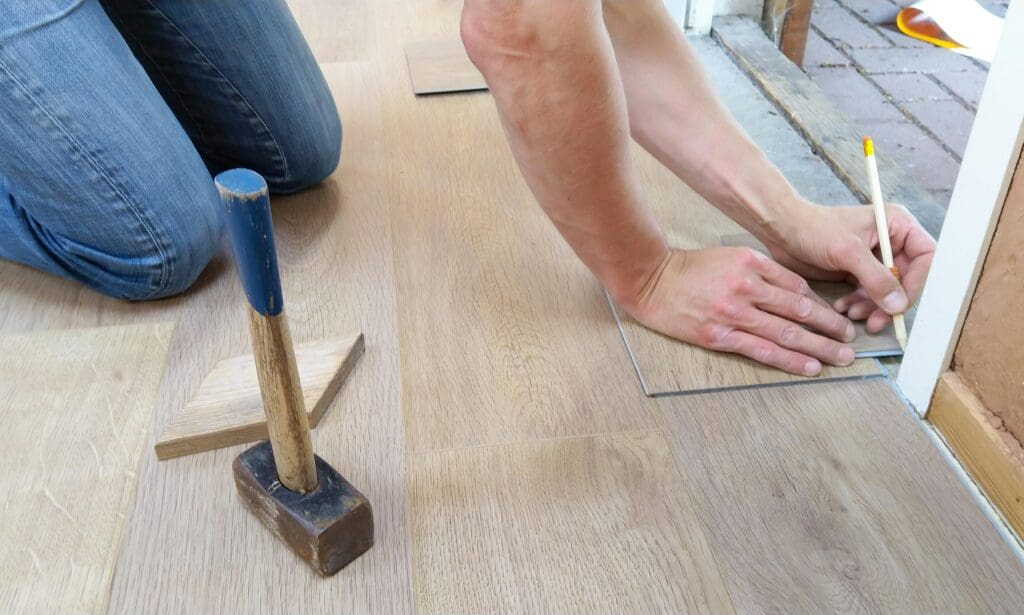
Why 80% of DIY Hardwood Floor Jobs Fail: A Professional’s Guide to Getting It Right
When you’re investing in hardwood flooring, you’re not just buying materials – you’re investing in your home’s future. With industry reports showing nearly $1 billion in annual hardwood floor damage across the country, choosing the right installation team becomes crucial. The complexity of proper installation extends far beyond simply laying boards in a pattern.
The Hidden Risks of Improper Installation
The journey to perfect hardwood floors begins long before the first board is laid. Professional installers understand that proper acclimation is non-negotiable – it’s a critical process that typically requires at least five days of controlled temperature and humidity conditions. During this period, the wood adjusts to your home’s unique environment, preventing future warping, buckling, or unsightly gaps that often plague DIY installations.
Subfloor preparation, though invisible in the final product, represents one of the most crucial phases of installation. Professional installers begin by installing specialized underlayment or asphalt-impregnated paper, creating an essential moisture barrier that protects your investment. This careful preparation prevents the squeaking and movement that often develops in improperly prepared floors. The expertise required for this step alone often justifies professional installation, as moisture-related problems account for the majority of flooring failures.
The Professional Advantage
Professional installation teams bring an arsenal of specialized knowledge and equipment to every project. Their expertise encompasses:
Moisture Management
Professionals employ sophisticated moisture testing equipment to assess both the subfloor and hardwood materials. They maintain detailed records of moisture content readings and ensure both materials fall within recommended ranges before proceeding. This scientific approach to installation prevents many common flooring failures.
Technical Precision
The installation process requires precise cutting and fitting techniques that professionals have honed through years of experience. They understand the subtle nuances of different wood species and how each responds to environmental changes. This knowledge influences everything from board selection to expansion gap calculations.
Environmental Considerations
In challenging spaces like basements or areas over concrete subfloors, professional expertise becomes invaluable. These installations require specific moisture barriers and specialized installation techniques that vary based on your home’s unique conditions. Professional installers assess factors such as:
- Subfloor material and condition
- Room layout and traffic patterns
- Heating and cooling systems
- Seasonal humidity variations
- Quality Control That Makes a Difference
Professional installation involves a comprehensive quality control process that extends far beyond basic installation. Each step is carefully monitored and executed.

Pre-Installation Assessment
Before work begins, professionals conduct a thorough evaluation of your space, including moisture testing, subfloor assessment, and acclimation monitoring. This careful preparation ensures optimal conditions for installation.
- Installation Execution: During installation, professionals pay meticulous attention to:
- Proper board selection and pattern matching
- Precise cutting and fitting techniques
- Correct nail spacing and placement
- Proper expansion allowances
These details, while seemingly minor, significantly impact both the appearance and longevity of your floors.
The Long-Term Value Proposition
While DIY installation might appear cost-effective initially, professional installation often proves more economical over time. Professional installers provide comprehensive services that protect your investment:
Warranty Protection: Most manufacturers require professional installation to maintain warranty coverage. This requirement exists because proper installation is crucial for long-term performance. Professional installation typically includes:
- Documented moisture testing
- Proper acclimation procedures
- Correct fastener selection and placement
- Professional-grade underlayment materials
Quality Assurance
- Professional installers don’t just install floors – they create lasting investments. Their work includes:
- Detailed documentation of installation conditions
- Proper moisture barrier installation
- Expert board selection and placement
- Post-installation inspection and adjustment
- The Bottom Line
When considering that hardwood flooring represents a significant investment in your home’s value, professional installation becomes an essential component of protecting that investment. While DIY projects might offer initial cost savings, the expertise, equipment, and attention to detail that professionals bring to the project often prevent costly repairs and replacements down the line.
Ready to start your hardwood flooring project with confidence? Contact Pasquale Floors for a consultation. Let our expertise ensure your flooring investment stands the test of time.
